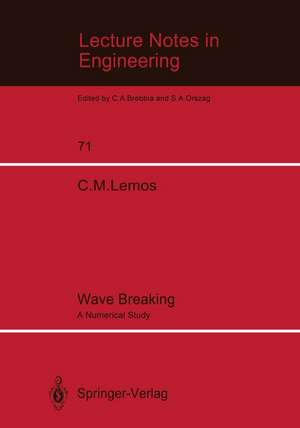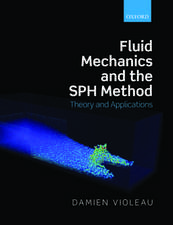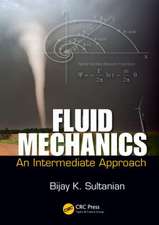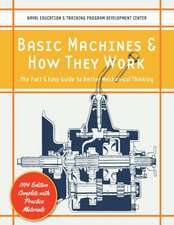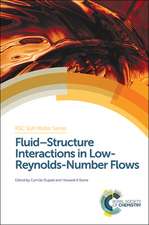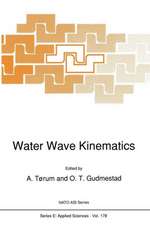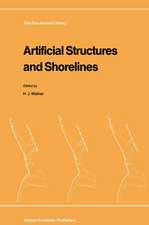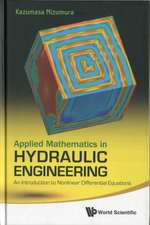Wave Breaking: A Numerical Study: Lecture Notes in Engineering, cartea 71
Autor Carlos M. Lemosen Limba Engleză Paperback – 5 mar 1992
Din seria Lecture Notes in Engineering
- 15%
 Preț: 640.37 lei
Preț: 640.37 lei - 15%
 Preț: 643.34 lei
Preț: 643.34 lei - 15%
 Preț: 632.70 lei
Preț: 632.70 lei - 18%
 Preț: 1049.30 lei
Preț: 1049.30 lei - 15%
 Preț: 637.59 lei
Preț: 637.59 lei - 15%
 Preț: 638.89 lei
Preț: 638.89 lei - 15%
 Preț: 637.93 lei
Preț: 637.93 lei - 15%
 Preț: 635.96 lei
Preț: 635.96 lei - 15%
 Preț: 637.78 lei
Preț: 637.78 lei - 18%
 Preț: 957.13 lei
Preț: 957.13 lei -
 Preț: 397.01 lei
Preț: 397.01 lei - 15%
 Preț: 653.79 lei
Preț: 653.79 lei - 15%
 Preț: 638.57 lei
Preț: 638.57 lei - 15%
 Preț: 634.82 lei
Preț: 634.82 lei - 15%
 Preț: 644.18 lei
Preț: 644.18 lei - 15%
 Preț: 635.15 lei
Preț: 635.15 lei - 15%
 Preț: 637.93 lei
Preț: 637.93 lei - 15%
 Preț: 633.19 lei
Preț: 633.19 lei - 15%
 Preț: 653.79 lei
Preț: 653.79 lei - 15%
 Preț: 636.45 lei
Preț: 636.45 lei - 15%
 Preț: 651.02 lei
Preț: 651.02 lei - 20%
 Preț: 645.31 lei
Preț: 645.31 lei - 15%
 Preț: 639.08 lei
Preț: 639.08 lei - 15%
 Preț: 633.19 lei
Preț: 633.19 lei - 15%
 Preț: 655.13 lei
Preț: 655.13 lei - 15%
 Preț: 652.49 lei
Preț: 652.49 lei - 15%
 Preț: 652.81 lei
Preț: 652.81 lei - 15%
 Preț: 643.48 lei
Preț: 643.48 lei - 15%
 Preț: 638.24 lei
Preț: 638.24 lei - 20%
 Preț: 640.51 lei
Preț: 640.51 lei - 15%
 Preț: 675.58 lei
Preț: 675.58 lei - 15%
 Preț: 639.59 lei
Preț: 639.59 lei - 15%
 Preț: 642.18 lei
Preț: 642.18 lei - 15%
 Preț: 638.43 lei
Preț: 638.43 lei -
 Preț: 434.12 lei
Preț: 434.12 lei - 15%
 Preț: 642.68 lei
Preț: 642.68 lei - 15%
 Preț: 647.27 lei
Preț: 647.27 lei - 15%
 Preț: 655.92 lei
Preț: 655.92 lei - 15%
 Preț: 665.73 lei
Preț: 665.73 lei -
 Preț: 411.64 lei
Preț: 411.64 lei -
 Preț: 406.80 lei
Preț: 406.80 lei - 15%
 Preț: 634.68 lei
Preț: 634.68 lei - 15%
 Preț: 650.86 lei
Preț: 650.86 lei - 18%
 Preț: 974.49 lei
Preț: 974.49 lei - 15%
 Preț: 642.68 lei
Preț: 642.68 lei - 15%
 Preț: 635.31 lei
Preț: 635.31 lei - 15%
 Preț: 640.37 lei
Preț: 640.37 lei - 15%
 Preț: 636.45 lei
Preț: 636.45 lei - 20%
 Preț: 659.63 lei
Preț: 659.63 lei - 15%
 Preț: 651.51 lei
Preț: 651.51 lei
Preț: 637.59 lei
Preț vechi: 750.11 lei
-15% Nou
Puncte Express: 956
Preț estimativ în valută:
121.100€ • 127.84$ • 100.86£
121.100€ • 127.84$ • 100.86£
Carte tipărită la comandă
Livrare economică 11-25 aprilie
Preluare comenzi: 021 569.72.76
Specificații
ISBN-13: 9783540549420
ISBN-10: 3540549420
Pagini: 208
Ilustrații: VIII, 196 p.
Dimensiuni: 170 x 242 x 11 mm
Greutate: 0.34 kg
Ediția:Softcover reprint of the original 1st ed. 1992
Editura: Springer Berlin, Heidelberg
Colecția Springer
Seria Lecture Notes in Engineering
Locul publicării:Berlin, Heidelberg, Germany
ISBN-10: 3540549420
Pagini: 208
Ilustrații: VIII, 196 p.
Dimensiuni: 170 x 242 x 11 mm
Greutate: 0.34 kg
Ediția:Softcover reprint of the original 1st ed. 1992
Editura: Springer Berlin, Heidelberg
Colecția Springer
Seria Lecture Notes in Engineering
Locul publicării:Berlin, Heidelberg, Germany
Public țintă
ResearchCuprins
1: Introduction.- 1.1 Nature and scope of the work.- 1.2 Methodology.- 1.3 Innovations and conclusions.- 2: General aspects of incompressible flow. Theoretical review.- 2.1 Introduction.- 2.2 The Navier-Stokes equations for uniform, incompressible fluids.- 2.3 Initial and boundary conditions.- 2.4 The energy equation.- 2.5 The vorticity equation.- 2.6 The pressure Poisson equation for incompressible flows.- 2.7 General aspects of turbulent flows. Averaging methods and Reynolds equations.- 2.8 Turbulence transport equations.- 2.9 Turbulence models.- 2.10 Boundary conditions for K and ?.- 3: Mathematical modeling of breaking shallow water waves. Proposed methodology.- 3.1 Introduction.- 3.2 Physical processes.- 3.3 Mathematical descriptions.- 3.4 Wave theories for very shallow water.- 3.5 Summary of experimental investigations.- 3.6 Description of the proposed methodology.- 4: MAC-type methods for incompressible free-surface flows.- 4.1 Introduction.- 4.2 The choice of the mesh.- 4.3 The MAC (Marker-And-Cell) method.- 4.4 The projection method.- 4.5 The SMAC (Simplified-Marker-And-Cell) method.- 4.6 The pressure-velocity iteration method.- 4.7 Numerical treatment of free-surfaces.- 4.8 Stability considerations.- 4.9 Conclusions.- 5: Description of the numerical model.- 5.1 Introduction.- 5.2 Momentum equation approximations.- 5.3 Continuity equation approximation.- 5.4 Approximations for the K and ? equations.- 5.5 Updating the fluid configuration.- 5.6 Velocity boundary conditions.- 5.7 Boundary conditions for the K and ? equations.- 5.8 Initial conditions for the K and ? equations.- 5.9 Stability considerations.- 5.10 Programming considerations.- 5.11 Selected test problems.- 6: Numerical simulation of shallow water waves.- 6.1 Introduction.- 6.2 Propagation ofa solitary wave over a horizontal bottom.- 6.3 Collision between solitary waves.- 6.4 Simulation of undular, transitional and turbulent hydraulic jumps.- 6.5 Breaking of a solitary wave over a slope.- 6.6 Breaking of a train of solitary waves over a slope.- 7: Conclusions. Future research and development.- 7.1 Summary and conclusions.- 7.2 Future research and development.- References.
